| Botanical Name |
|
| Family |
Euphorbiaceae - The euphorbia family. |
| Pronunciation |
Yew-FOR-bee-ah maw-rih-TAWN-ee-ka |
| Common Name(s) |
English: Golden Spurge; Milk bush
Geelmelkbos; Gifmelkbos; Jakkalsbos; Vingerpol
IsiXhosa: intsema; umsulusulu
|
| Plant Group |
- Succulent A plant having fleshy stems or leaves often adapted to dry conditions.
|
| Plant Size |
- Large
| Tree | 18m to 25m |
| Shrub | 3m to 4m |
| Perennial/ground cover | 75cm to 1m |
| Bulb | 80cm to 1.2m |
| Succulent | 1m to 1.5m |
|
| Position |
- Partial Shade The area is in shade for part of the day and in full sun for part of the day.
- Sun The area is in full sun for all or most of the day, all year round.
|
| General Information |
- Drought Tolerance: High The plant is well adapted to arid conditions; it can survive long periods of drought and high temperatures without extra water.
- Evergreen Plants that have leaves all year round.
- Frost: Hardy The plant can withstand freezing temperatures or frost without artificial protection.
- Water Wise Plant species originating from low rainfall regions that require less water to survive and thrive than other plant species.
- Wind Tolerant Plants able to withstand the effect of strong winds.
|
| Specific Information |
Euphorbia mauritanica is a spineless succulent bush, up to 1.5 m tall, with pencil-thin, cylindrical, smooth branches growing from a thick root. This plant produces yellow 'cyathia' (euphorbia 'flower'), that are in a crowded group at the end of each young branch. When the plant is injured, it produces a sticky, milky sap or latex at the cut, which is poisonous if swallowed. Euphorbia mauritanica grows very well in dry climates and in coastal as well as inland areas with colder winters. The blue to grey green stems are valued by gardeners for their colour and shape, and the plants make a good feature plant in a rock garden.
|
| Ad Break |
|
| Flowers |
| Description |
small groups of 'pseudo' flowers at the tips of branches
|
| Season |
- Winter to Spring Plants will seldom bloom for the entire season as given in the list, but should flower during a period within these parameters.
|
| Colour |
|
| Growth Rate |
- Moderate to Fast Specifying growth rate can be very misleading as there is considerable variation of growth rate depending on type and species of plant, available water, supplementary feeding, mulching and general care, as well as the plants suitability and adaptability to the garden environment.
|
| Plant Uses |
- Attracts bees, butterflies or other insects This plant attracts insects which can be food for birds or other creatures in your garden.
- Border A strip of ground, at the edge of a driveway or path in which ornamental plants or shrubs are planted.
- Filler Either a fast growing tree or shrub used temporarily to fill in an area while the permanent plants grow to a desired size, or a plant used to fill gaps in borders or beds.
- Foliage Plant Plants grown because their foliage is colorful or unique. Many of these plants have insignificant flowers.
- Pioneer for new gardens A very fast growing plant, able to withstand hardship, that can be used to populate land that has recently been cleared of natural vegetation. These plants pave the way for slower-growing species by adding nutrients to the soil and creating leaf litter.
- Rock Garden An area constructed of larger rocks, arranged naturally, to emphasise the use of stones as a main element. Generally plants used do not need a lot of care.
- Screen A tall hedge of suitable plants planted closely together and used as a windbreak, to block a bad view, to separate parts of the garden or as a backdrop.
- Wild Garden An indigenous garden planted for the benefit of wildlife and birds. Provides food, water, a variety of mini-biomes and no poisonous chemicals are used.
|
| Distribution and Habitat |
Northern, Western and Eastern Cape, Free State, KwaZulu-Natal, as well as Namibia, in valleys and on hillsides
|
| Planting Suggestions |
Plant in well-drained sandy soil in full sun or where it gets only a little shade each day. Do not over-water. Euphorbia mauritanica is easily propagated by cuttings of semi-hardwood taken from the bottom of the stem. I usually allow the cut to dry for a day or two before planting into well drained sandy soil.
|
| Medicinal Uses |
The San only used the milky latex for its cohesive properties.
|
| Ad Break |
|


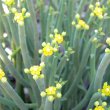
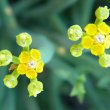
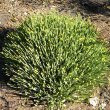
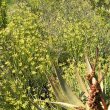
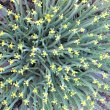
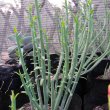
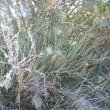


Discuss this plant
Share knowledge, ask a question or give an experience.